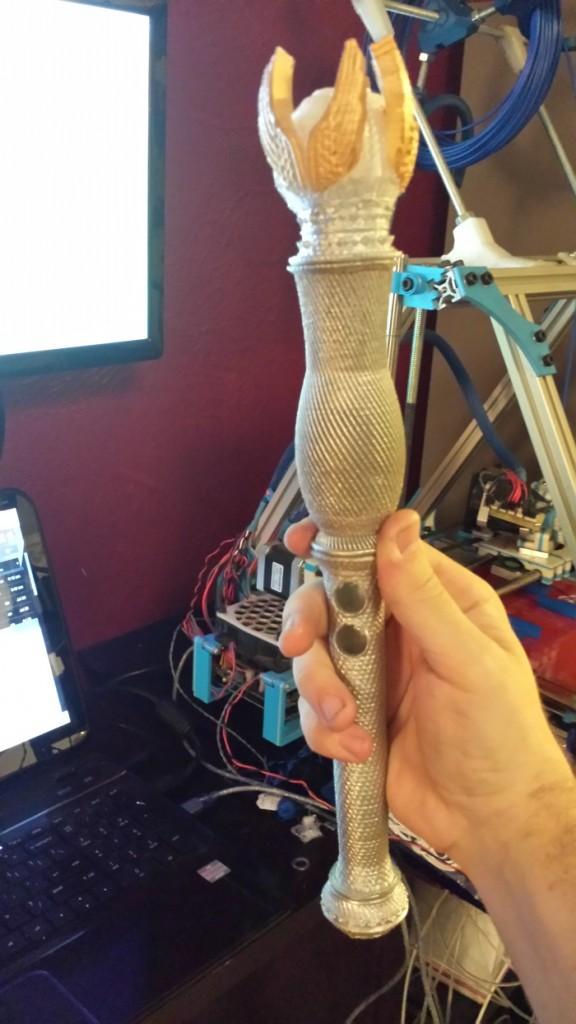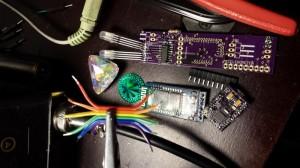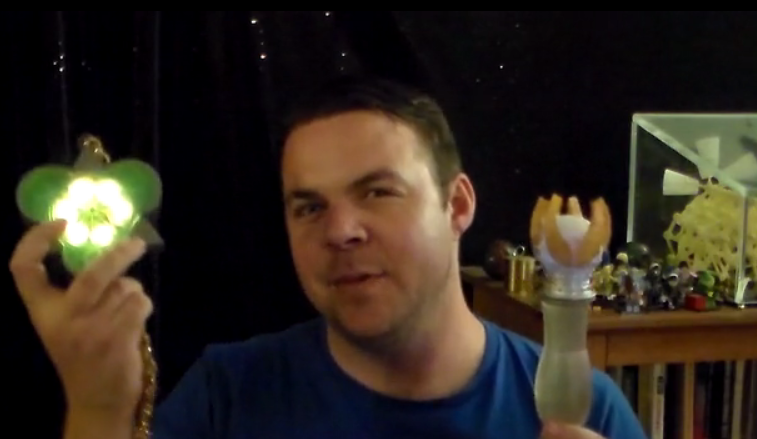 A band of role-play gamers and makers have combined forces (for the good) to take fantasy role play to the next dimension. David Ultis, self-proclaimed “Captain, commander, and sage visionary” has brought together a team of like-minded, versatile, and variously skilled enthusiasts to create SpellTag.
A band of role-play gamers and makers have combined forces (for the good) to take fantasy role play to the next dimension. David Ultis, self-proclaimed “Captain, commander, and sage visionary” has brought together a team of like-minded, versatile, and variously skilled enthusiasts to create SpellTag.
What is SpellTag? “Think of laser tag, but for mages, sorcerers, witches, and wizards,” explains Ultis. Whereas traditional role playing games (RPGs) involve cards, in some instances tokens, including avatars, a tabletop, and players or, in the case of digital RPGs, a computer or gaming station and an operator, SpellTag successfully combines “old school” and “high tech.”
“Think of being able to combine your magical weapon…and your health meter…into your own unique character, and gain experience, new magical skills, and exciting new additions to your gameplay each and every time you play!” boasts the design team’s Kickstarter campaign.
At its most basic, SpellTag requires at least two players, although more can participate. Each player has a wand “containing open-source electronics” for firing spells at “an opponent’s amulet.” Both wand and amulet, among other game-related objects, are 3D printed and then programmed. Ultis explains, “We have been slaving over our enchantment tables, mixing Arduino-based electronics and 3D printing into items that will enhance your cosplay (short for “costume play”), character building, and live action play…”
Ultis and his team have created “rich and flexible hardware” by using Arduino, that enables a more nuanced level of activity, from “spell casting capabilities, gesture controls, and display effects.” By combining, says Ultis, “a customized Arduino compatible shield, a super tiny Arduino microcontroller, a bluetooth radio, accelerometer, and an RGB LED display,” the creative team lent SpellTag its critical, central feature, what they call the “Light of Life Module.” All of the components fit successfully into the 3D-printed wand and amulet prototypes for the game.
One unique feature of SpellTag is that you can link it to your smartphone, which allows you access to “a constantly-updated online treasure trove of sorcery and gameplay.” While you turn your attention to real life, your seemingly inexhaustible character keeps playing. However, a smartphone is not a necessity as the wand and amulet can connect “in a standalone mode.”
But how does SpellTag actually work? According to the design team, “Playing is easy! Basically,” read their instructions on the site, “two or more players each have a wand for firing spells and an amulet acting as a health meter. Players face off, or hide behind stuff, and begin firing spells via their electronic wands, at each other.” A wand lights up variously when a spell is cast. When a player takes a hit, the amulet glows. The more often a player suffers hits, the dimmer his amulet and wand grow. Lights out? You’re out.
That’s the less complicated laser-tag nature of the game. There’s a deck as well, which SpellTag designers dubbed, the “Decorum Deck.” Each card in the deck features “printed patterns that are recognized by the SpellTag app. and display secret enchantments, setting features like health fountains, vaults to search, and spells that trigger gameplay for every magic user.” In a nod to the complexity of traditional RPGs, with SpellTag, players have the capacity to “create their own augmented reality spells that will be incorporated into the game.”
In their more mundane, mortal incarnations, the SpellTag design team members have plenty of previous experience. According to their group-bio on their Kickstarter site, they have “been immersed in development of projects and products within the open-hardware industry, and specialize in bringing manufacturing tools like 3D printing, lasers, and CNCs (Computer Numerical Control) for fabrication on many educational scientific projects and workshops.” They conclude, “We are the guys that people usually come to in order to manufacture their own ideas.”
So, what are their aspirations for SpellTag? The team intends to engage others in further development, to “foster an open community of characters, developers, enthusiasts, and players to join together to create something truly built inside and for a deserving community of people worldwide.” Not unlike a multi-player game, SpellTag will, ideally, be refined by a broader band of wizards, rogues, fighters, thieves, and the like.
Any larger scale production will, as Ultis and company put it, “be produced by the masses.” It will be up to the SpellTag team or, more likely, the exponentially expanding team, to provide “a well-supported set of resources and hardware, ongoing stories and scenario and genre generations, and support for fan-made industries.” If anything, the ongoing saga of SpellTag will mimic its nature as a player- (and creator)-based, constantly evolving story. Further details on this Kickstarter project are provide in the video below.
Subscribe to Our Email Newsletter
Stay up-to-date on all the latest news from the 3D printing industry and receive information and offers from third party vendors.
You May Also Like
NSF Awards Kentucky $1M for Advanced Manufacturing
The National Science Foundation has awarded a $1 million grant to the University of Louisville for the Advancing Manufacturing and Building Construction Technologies (NSF AMT) project. This initiative is part...
3D Printing News Briefs, May 11, 2024: 3D Printed Stent, Tower, Sculptures, & More
We’re starting off with medical research in today’s 3D Printing News Briefs, as researchers in Korea used CT images and 3D printing to fabricate an educational simulator for a mastoidectomy....
3D Printing Unpeeled: Wind Turbines, Probiotics and Lenses
TPI Composites, ORNL and Ingersoll Rand are working to make wind turbine tooling segments that can be 18.3 meters long. These elements also include resistive wires that help keep the...
Tethon 3D Releases Cost-effective Bioprinter
Tethon 3D, known for its ceramic-loaded DLP materials, custom resins, and DLP 3D printers, has recently released a bioprinter. Vat polymerization printers like DLP systems have been widely used by...


































